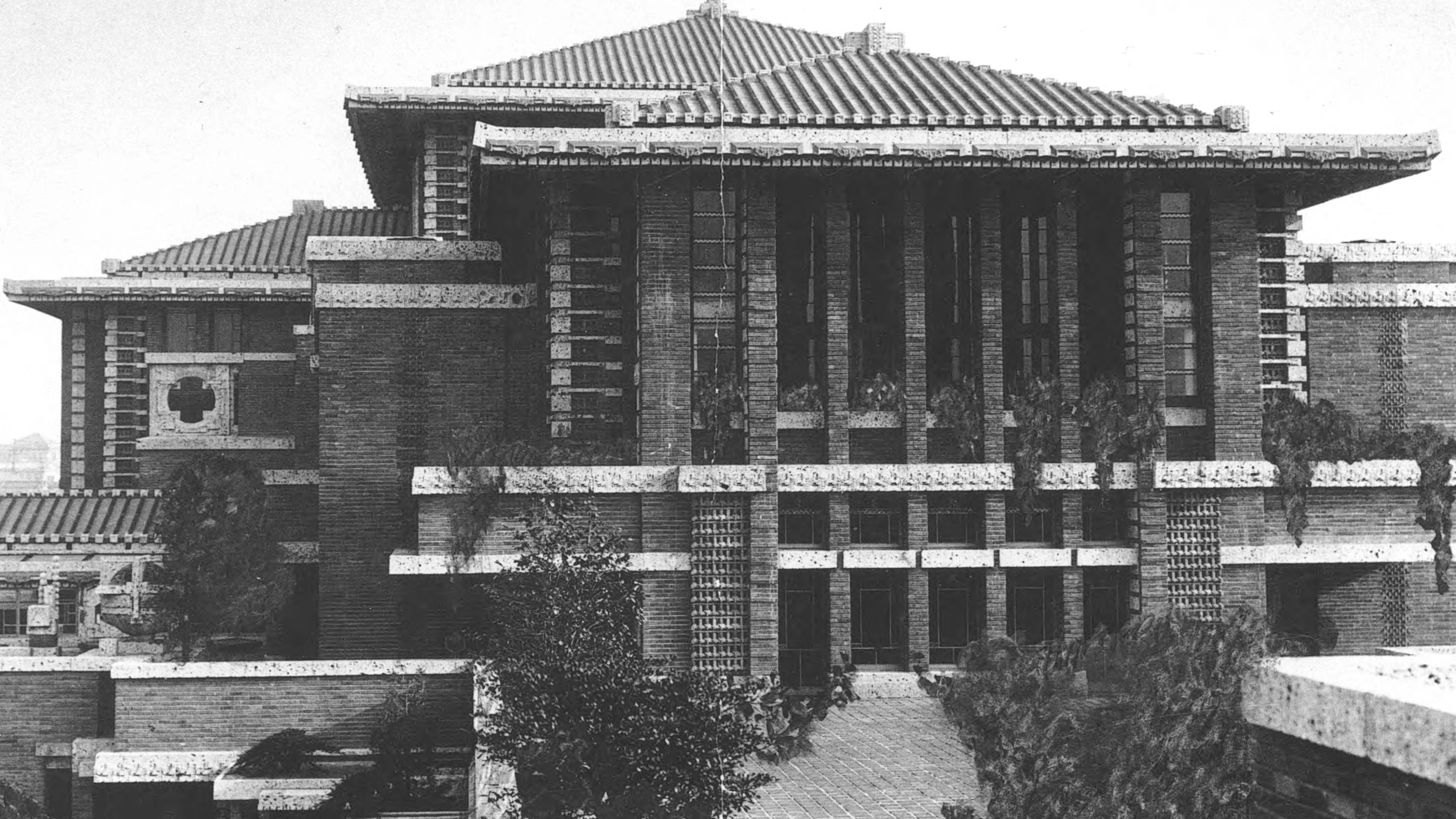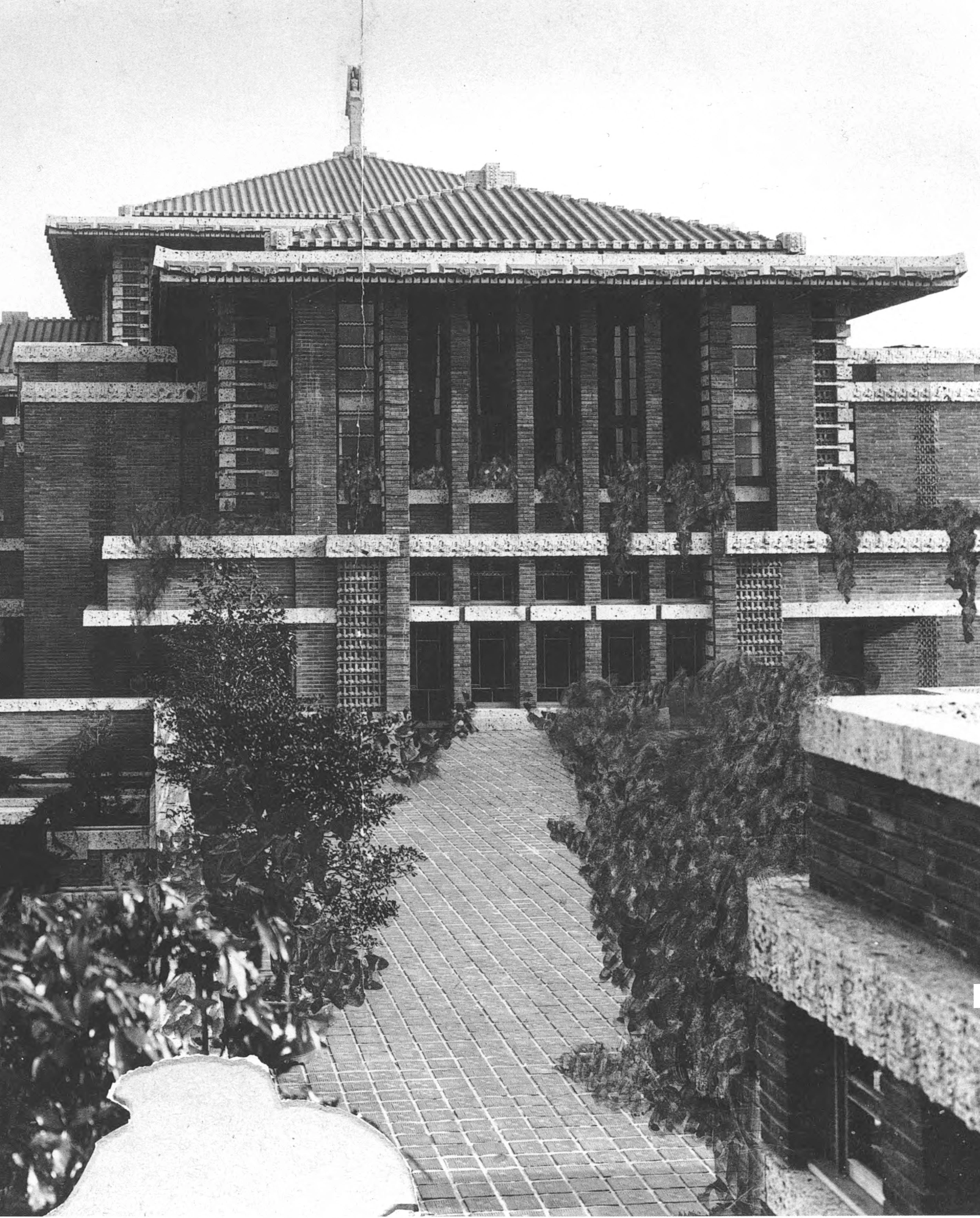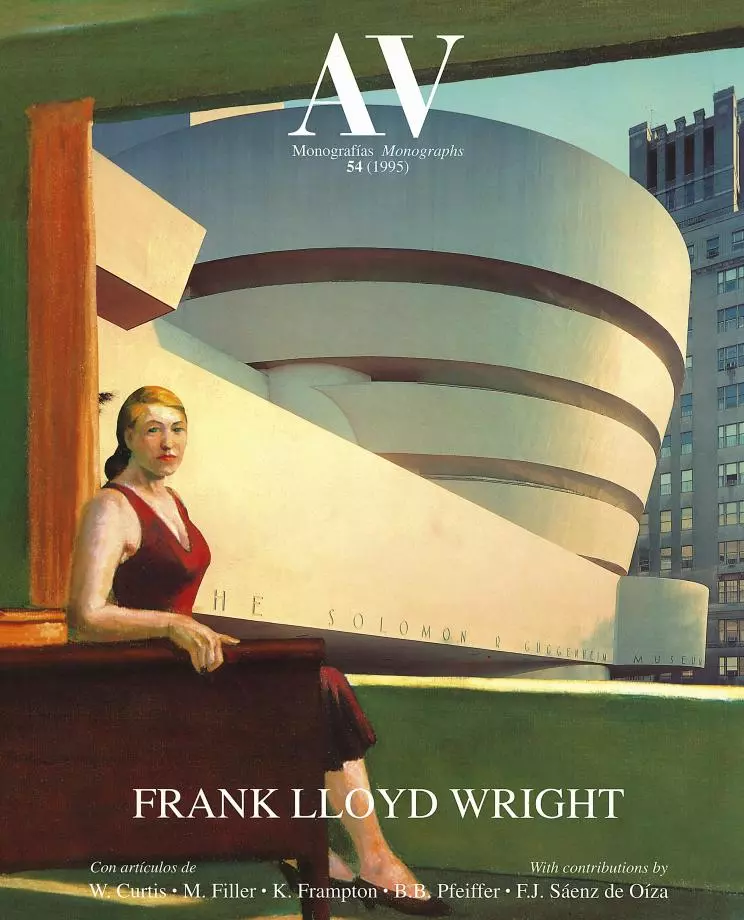Since His first visit to Japan in 1905, Frank Lloyd Wright was an avid collector of Japanese art. The commission for the Imperial Hotel allowed him to express his deep admiration for Nipponese culture.
The challenge was twofold: on one hand was the high frequency of earthquakes in the region, with the subsequent fires they caused; on the other, the formal composition of the building would have to harmonize with its venerable neighbor, the Imperial Palace. Wright responded by combining structural innovation with respect for artistic tradition.
The program was distributed in two long guest-room wings and a middle block for the axially connected common spaces: a three-story grand lobby, a two-story dining-room/ballroom, an auditorium and a banquet hall. Everywhere were spaces for collective gatherings as well as smaller, more private areas for intimate groupings, since in that era such buildings served as ‘social clearinghouses for the Japanese - who rarely invited foreigners into their homes - to hold their social and business meetings in.
To facilitate the above-mentioned functional layout, the scheme of the floor plan was halfway between an H and an E. Being only three stories high, the volume was predominantly horizontal, and it had highly articulated surfaces, with intricate decor carved out of a soft volcanic stone called oya. The large number of craftsmen placed at his disposal led Wright to let loose his ornamental expressivity and make this one of his more profusely decorated works. The entire building was designed to a four-foot-unit grid.
The structure rested on a foundation network of thin concrete pins set nine feet deep and two feet apart throughout that made the building above float over a mud substrata below. Entirely new to the Japanese at the time, such a solution - together with the cantilevered reinforced concrete slabs and the elastic brick masonry - made the hotel withstand the great quake of September 1, 1923. This near miracle created the myth that any wedding held in its halls would guarantee a happy marriage.
What nature could not do was eventually achieved by real estate speculation, and the hotel was demolished in 1968. Thanks to stereoscopic photography, robot machines were able to reproduce each one of the pieces, and part of the building was reconstructed in 1976 at the open-air museum of Meiji-Mura, near Nagoya...[+]
Opening
Axial view from pool.
Photos
Frank Lloyd Wright Foundation.







